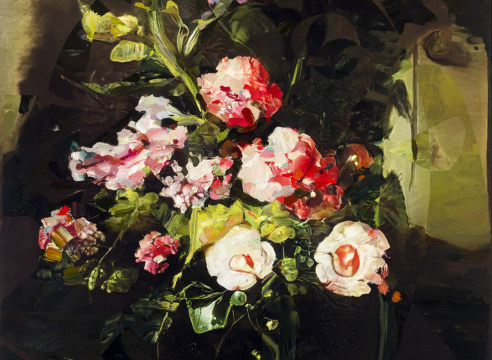
29 February 2020 (New Orleans, LA)JONATHAN FERRARA GALLERY is proud to announce, Art In Doom, a springtime group exhibition curated by Gallery Director Matthew Weldon Showman. This contradictory and ironic exhibition features work from established artists working across a wide range of mediums, including painting, photography, sculpture, and ceramics. Art in Doom will be on view 29 February – 15 August 2020 with opening receptions on 7 March and 4 April in conjunction with the Arts District New Orleans’ First Saturday Gallery Openings.
Death. Destruction. Ill fate. Art in Doom features artworks by Tiffany Calvert, Beth Carter, Peter Olson, Nora See, and William Woodward, visually elucidating such unsavory subjects as: political corruption, gender inequality, religious pathology and the human condition. Cheekily scheduled during the springtime, a time of rebirth and rejuvenation, this exhibition derives its name from the event “Art in Bloom” which occurs at numerous museums nationwide during this time period. Taking a stark rejection of the idealization of Springtime, this exhibition highlights the dark and twisted pathos of humanity that is ever-present . . .
William Woodward’s masterful paintings present a satiric reflection of reality through the personification of the Seven Deadly Sins. His paintings hold up a mirror to society and force the viewer to acknowledge the extent to which their own inner selves are reflected in the scene.
Likewise, Beth Carter makes a similar commentary on humanity by blending human and animal figures in her bronze sculptures. Through savage distortions of the human face and body, she highlights humanity’s predisposition to animalistic behavior. The resulting imagery showcases the human desire to see ourselves as separate from the natural world while also highlighting our inability to ever achieve a true separation from the animal within.
Nora See, on the other hand, takes a much more forward approach with the messages in her paintings. With a harsh candor, Nora See’s paintings dissect the current socio-political climate and force the viewer to reckon with the gruesome and painful realities that have resulted for many as a result of the actions of people in power. Her paintings shed light on the harsh realities of contemporary society, including dehumanization, manipulation, and abuse of power.
Peter Olson’s artwork has harmonized photography and ceramics in vessels whose shapes hearken back to the ancient world. As bands of imagery spin around the thrown and assembled ceramic garnitures, there is a feeling that time is passing, history is revealing itself, a story is being told. The skeletal imagery, religious iconography, and the urn-like shapes of the self-contained vessels explore the artists’ meditations on the temporality of life and the perpetuation of time.
As an artist, Tiffany Calvert applies contemporary painting techniques to seventeenth-century Dutch floral still life, whose themes have traditionally underscored the transience and impermanence of life. She uses these vanitas images as a springboard for exploring the shifting nature of human perception, employing techniques such as gridding, fragmentation, and image reversal in order to obstruct and interrupt the viewer’s perception of the image. Like a digital “glitch” or a scrambled transmission, Calvert generates paintings that are suspended in a moment, simultaneously on the verge of destruction or cohesion.
For more information, press or sales inquiries please contact Gallery Director Matthew Weldon Showman at 504.343.6827 or matthew@jonathanferraragallery.com. Please join the conversation with JFG on Facebook (@JonathanFerraraGallery), Twitter (@JFerraraGallery), and Instagram (@JonathanFerraraGallery) via the hashtags: #ArtInDoom, #JonathanFerraraGallery and #ArtsDistrictNewOrleans